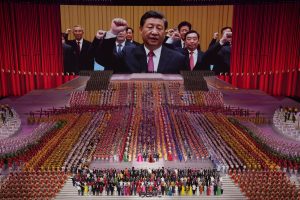The cover of The Diplomat Magazine’s very first issue was devoted to China’s economy. And with good reason: China is not only the world’s second largest economy, but also the main trading partner of nearly all its fellow Asian countries. It is also a critical piece of global supply chains, as the COVID-19 pandemic – and related disruptions to those supply chains – made abundantly clear.
In Issue 1 (December 2014), Michael Pettis explored the lessons Xi Jinping, then just two years into his term as top leader, could learn from Deng Xiaoping to advance China’s economic “Reform and Opening Up” into a new phase. Since then, the magazine has repeatedly probed the nexus of Chinese politics and economics. In Issue 7 (June 2015), Yukon Huang explored the causes and consequences of corruption in China; Issue 25 (December 2016) saw Kerry Brown preview the economic implications of the 19th National Party Congress, then a year away. Elsa Kania explained the infamous “Made in China 2025” policy – one of the earliest signals of a turn away from China’s “Opening Up” – in Issue 51 (February 2019).
China’s economic direction will continue to be a topic of crucial importance for the Asia-Pacific and the world. In this story, Sara Hsu puts together pieces addressed in separate magazine articles in the past to explain the overarching changes in China’s economic trajectory since Xi Jinping came to power in late 2012.
– Shannon Tiezzi
Xi Jinping, who secured a precedent-busting third term as general secretary of the Chinese Communist Party (CCP) last year, is viewed as the most powerful Chinese leader since Mao Zedong. He has consolidated his power through anti-corruption purges, regulatory crackdowns, and increased censorship and surveillance. With a view of a strong China as a model of a communist state, Xi has diverged from his predecessors’ tendency to steer China toward comparisons with Western economies.
In other words, Xi changed China’s trajectory from the “Reform and Opening Up” of his predecessors toward a more internal and state-focused model of economic development. This was shaped, in part, by an external environment, led by the United States, that became increasingly hostile to Chinese state-led and technological development and by the global pandemic, which threatened to create social chaos.
These external influences are reflected by Xi’s turn away from reform led by the private sector, positioned to make China more attractive to foreign investors, to a more cautious and balanced approach to economic development, embodied in the “common prosperity” campaign. Common prosperity references terminology used by Xi’s more conservative Communist Party predecessors, and underscores Xi’s position as a communist leader first, and a proponent of economic growth a trailing second.

































